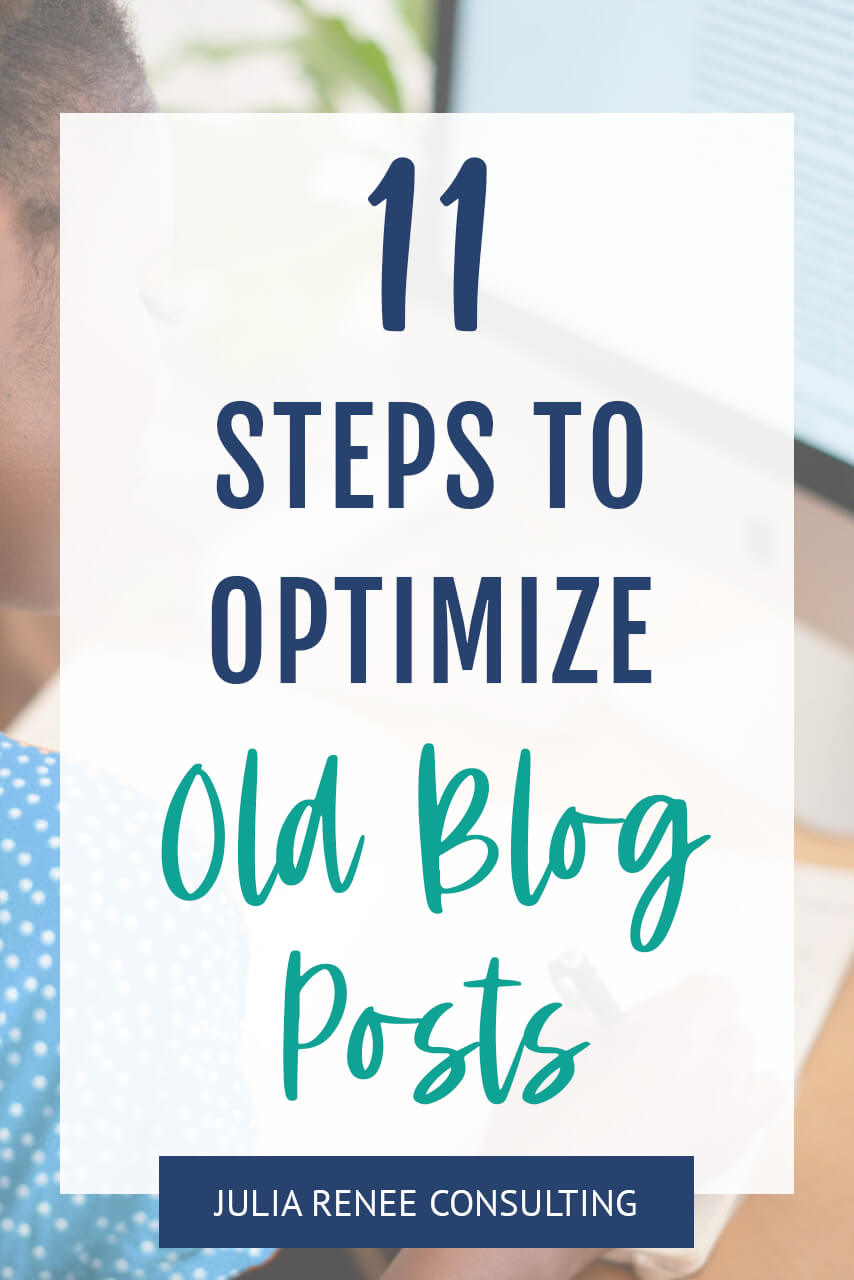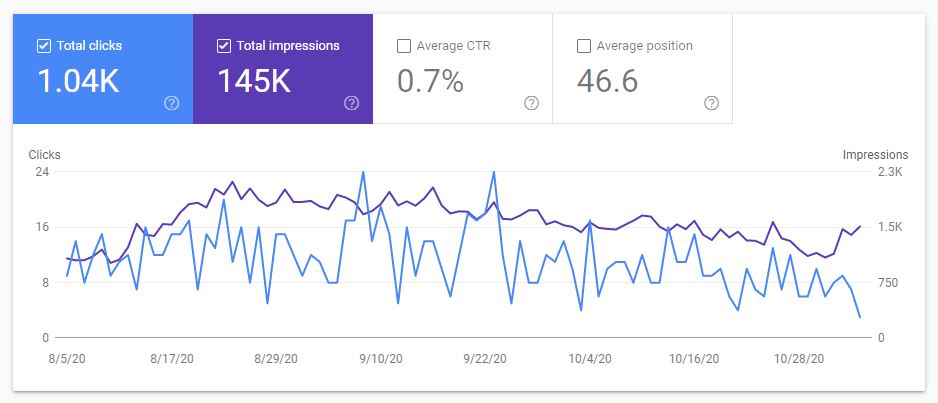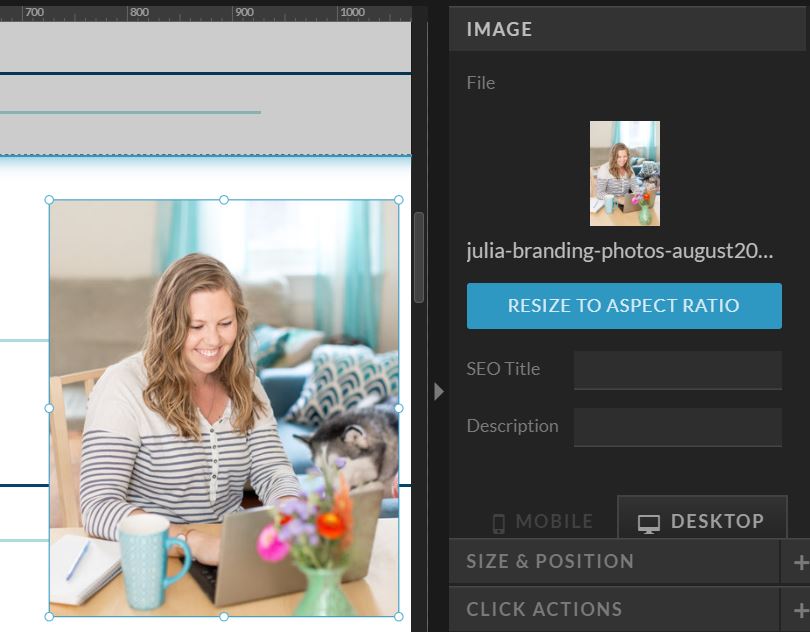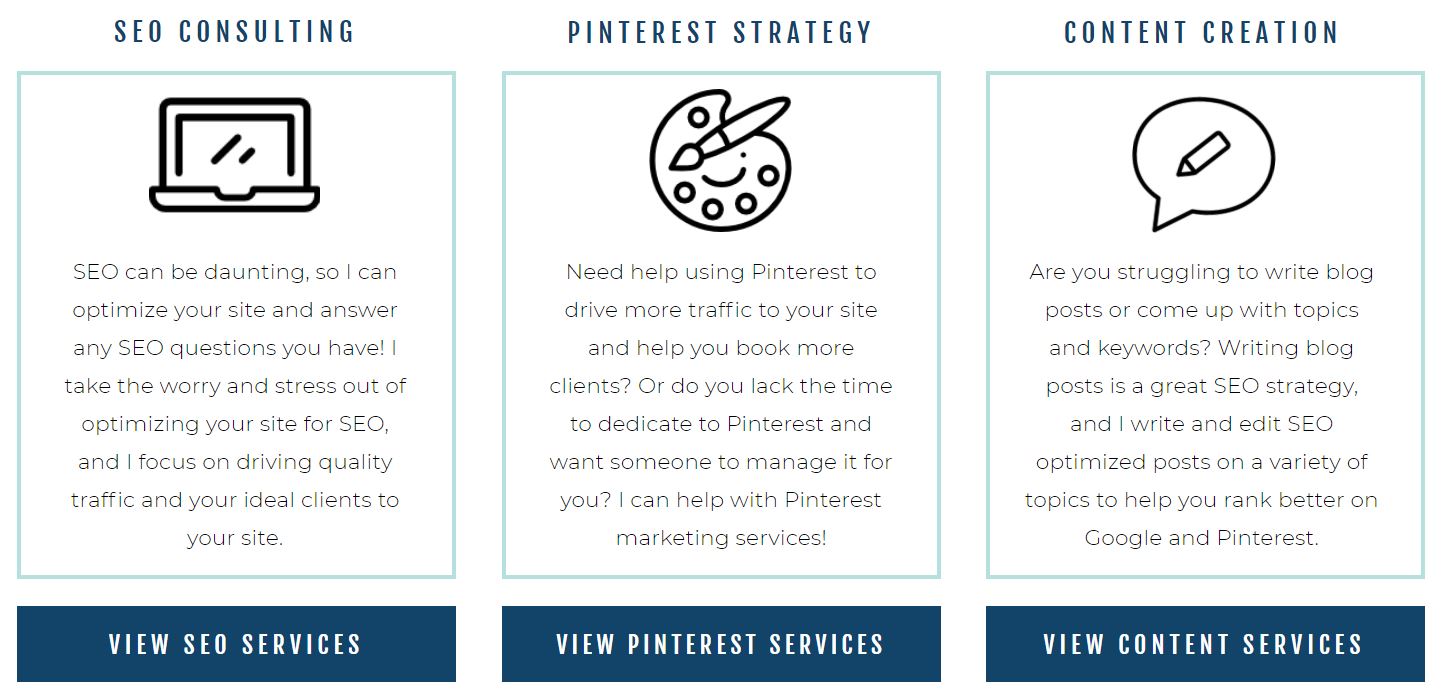I give a lot of advice on optimizing new blog posts, but what about updating old blog posts for SEO? Is it worth it?
I’ll give you the answer every SEO expert gives about every SEO question- it depends! 😉
I do think there’s value in updating old blog posts for SEO- if they’re worth updating. If you’re a copywriter and have a blog post that’s 5 years old about a business retreat you went on, it’s probably not worth freshening up (but still make sure it’s been updated for accessibility). But if it’s a 5-year-old blog post about your favorite copywriting tools and it has a lot of value, then I think it probably is worth updating. Or if it’s a topic you know your audience is interested in but it’s just not ranking as well as you think it should be, you can update it and optimize it better to help give it a boost in rankings and traffic!
So go through your content and see if there’s anything that needs a refresh or some new information, and follow these steps for optimizing your older content!
Check your data
Before choosing what content to refresh, check to see what blog posts even get traffic. Look at your data in Google Analytics and Google Search Console to see what blog posts people are reading, how long they’re staying on the blog post, and what keywords you’re ranking for (I’ll explain this in more detail in this post).
If you’re seeing that you have some blog posts that no one has read in a year, it could be that people just aren’t interested in that topic, so it might not be worth updating. But if there’s a blog post that people are visiting but are spending less than a minute reading, people are probably interested in that topic but you don’t have enough information or relevant information to keep them engaged. So analyze the data and see which blog posts should be your top priority.
Update any outdated information
Link to a website that no longer exists or has changed its name in a blog post? Or does a platform you mention have new features? Definitely make sure you update that not only for SEO but also for your readers.
Along with SEO, I also blog about Pinterest, and Pinterest and Tailwind are constantly adding new features and changing the names of things, so I’m constantly updating those blog posts to give my audience the most relevant information. You want to make sure you’re giving readers and potential clients the most updated information out there to help them and also to show that you keep up with the news and trends.
Do keyword research
Check Google Search Console to see what you’re already ranking for. If you have a blog post isn’t ranking anywhere on Google, start with keyword research. You might not be ranking because the keyword you previously chose is too competitive or just nobody is searching for it.
If you need help with keyword research, I have a blog post with more tips and tools for keyword research. Once you find a good keyword that fits with your blog post, make sure you’re incorporating it in your title and a few times throughout your blog post.
Edit the content
As you’re updating old blog posts for SEO, make sure you’re using your keywords throughout your content, and make sure you’re editing the content as needed. If you have super long paragraphs, break them up to make them easier to digest. If you say what month or year it is, update it to the current year (if it makes sense with the context) or just remove it.
You can even add content if you need to. If you have a blog post that’s only a few hundred words long, see if you can add more information. Longer blog posts tend to rank better than shorter, and they help keep people on your site longer.
Add headings
Along with breaking up long paragraphs, add some headings to help break up your blog post and make it easier for people to find specific sections they want to make sure they read.
Headings don’t carry a ton of weight for ranking in Google anymore, but they’re still a good way to reinforce to Google and readers what the main topics are and they make long blog posts seem less overwhelming.
Add images and image alt tags
Images are another great way to break up large blocks of text as well as make your blog post more visually appealing. If you don’t have a very visual business, just adding a few stock photos throughout a post can still make a difference. SEO isn’t the most visual topic, but you’ll notice that all of my blog posts have screenshots of relevant examples or just related stock images.
When you add images, make sure you’re adding image alt tags (also called alt text, image description, SEO description, etc. depending on the platform) to help your images be accessible for anyone using a screen reader. Just focusing on describing the image and don’t worry about adding keywords if your business isn’t a visual one (for example, I don’t add “SEO” to every image on my blog posts if it isn’t relevant).
Optimize the title tags and meta descriptions
When you check your data in Google Search Console, did you notice any keywords that you rank for that get a ton of impressions but just a little traffic? You could be targeting a keyword that doesn’t align with what people are trying to find, and your title tags and meta descriptions could also be deterring people from clicking through to your site.
I have an entire blog post on how to write title tags and meta descriptions so you can get more details there, but in a nutshell, make sure you’re being informative and concise with what people will expect when they click through to your site. And make sure you have some intrigue to get them wanting more information.
Add links to new blog posts
Have you written a new blog post that can serve people reading your old blog post? Link to it in your post! Directing people to check out another blog post will give them more information that they could be interested in and help keep them on your site longer.
Add a CTA
Don’t start updating old blog posts for SEO just for the sake of ranking higher in Google; you want to make sure your blog posts are serving your business. User experience is important both for Google and for potential clients. Make sure you have a call-to-action (CTA) at the end of every single blog post leading people to where you want them to go next and encouraging them to take action.
A CTA can be to sign up for your email list, to check out your services, to visit your shop page, to contact you with questions or for a consultation- whatever best serves your business and your sales funnel. Make sure it’s clear and eye-catching and more than just hyperlinked text. And make sure you’re writing about topics related to your business in the first place to help make your CTAs more natural!
Don’t change the link
After optimizing your content, don’t change the link for your blog post. This is going to result in a broken link and a 404 error, which can hurt your SEO and user experience. So just keep the link the same and don’t mess with it!
One caveat to that is if you’ve completely changed your blog post title and the url just doesn’t make sense anymore. So if you need to change the url, make sure you set up a 301 redirect from your old url to your new one.
Share your updated content
Now that you’ve made all these updates to your blog post, don’t forget to tell people about it! Sharing your content on social media (and definitely on Pinterest) and getting more traffic will help show Google that people are interested in your blog post, which can help your rankings.
So those are the main steps you need to follow when updating old blog posts for SEO! And once you update and share them, be sure to monitor your data in Google Analytics and Google Search Console to make sure you start to see more traffic with time.
If you want more information on how to optimize your blog posts, grab my blog post cheat sheet to help guide you!





